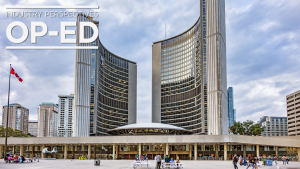Focus on the primary cause for the spread of COVID-19 has shifted from direct human contact to airborne transmission. As a result, medical authorities around the world are now encouraging everyone to wear face masks.
The same suggestion could be made to encourage building owners and designers to upgrade HVAC system designs — the building’s own virus filtration mask.
In fact, infectious disease specialists around the world, led by Dr. Stephanie Taylor, Infection Control Consultant at Harvard Medical School, are petitioning the World Health Organisation to address the interior air quality of public buildings in order to improve the health and well-being of occupants.
The petitioners cite three key benefits: performance improvements in the respiratory immune system; a reduced ability for virus droplets to remain airborne; and the enhanced possibility for physiochemical reactions to occur that deactivate the virus.
The issue of interior air quality needs to be addressed both in the immediate and long-term, according to American architect and author Joe Snider. As Snider writes in GreenBiz, “The reality is that at some point we will reopen society, our economy and therefore our buildings, with the coronavirus still very much a highly contagious threat.”
Looking further ahead, Snider adds that interior air quality will be an issue destined to affect building design for decades to come.
“Even in non-pandemic scenarios, it can be smart business to spend some time focusing on healthy indoor environments for workers,” he says. “Poor indoor air quality is not good for people’s lungs.”
Concerns regarding virus transmission are being addressed by industry as well as medical specialists. The American Society of Heating, Refrigerating and Air-Conditioning Engineers (ASHRAE) established its own Epidemic Task Force in March, hoping to “deploy ASHRAE’s technical resources to address the challenges of the current pandemic and future epidemics as it relates to the effects of heating, ventilation, and air-conditioning systems on disease transmission in health care facilities, the workplace, home, public and recreational environments.”
“Most commercial building codes require a minimum amount of outdoor air to be coming into different spaces in a building,” writes Snider. “However, just because there is a minimum doesn’t mean that a space can’t exceed minimum code requirements.”
In fact, internal ventilation and air quality approaches used by medical facilities could provide guidance for owners and designers of commercial projects.
“Proper ventilation and indoor air quality must be maintained to ensure proper infection control and patient safety,” writes Gregory Hudson in HPAC Engineering.
Hudson lists air device selection and placement, replacement air free of contaminants, removal of contaminants through proper filtration or direct exhaust, and controls capable of maintaining ASHRAE-mandated airflows and pressure relationships as solutions for meeting today’s higher expectations. He adds that any increased energy costs associated with improved system designs can be mitigated by installing programmed air control systems that adjust airspace heating and cooling loads while maintaining pre-set humidity levels during unoccupied or night-time space usage.
Snider outlines several immediate steps building owners can take to address air quality and ventilation issues, beginning with a tune-up using Testing, Adjusting and Balancing (TAB) technicians to verify airflows inside the building and correcting when necessary. Portable HEPA units can be installed in contained areas of poor ventilation.
Going forward, new protocols can be considered that include regular filter changes, greener cleaning agents, less toxic chemicals, paints and sealants, operational windows and programmed air purges to allow the entire interior air volume to be replaced with fresh outside air.
If TAB technicians suggest equipment replacement, Snider suggests units with higher MERV (Minimum Efficiency Reporting Value) filtration ratings.
For reference, hospitals use filters with a 16 rating. Most commercial buildings have MERV ratings around six, not enough to filter out droplets under three microns, the size of droplets holding the COVID virus.
An unoccupied building offers an ideal opportunity to address these HVAC issues before employees return to work, in order to prevent spread of the COVID-19 virus and any future airborne diseases.











Recent Comments